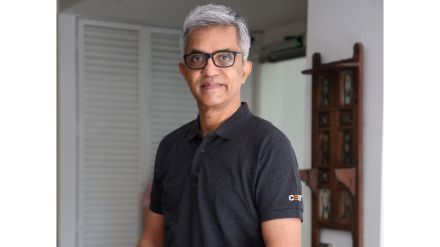Two-wheeler tyre leader Ceat (28% in 2022) has ambitious plans to enter the US market this fiscal and double its international business turnover. MD and CEO Arnab Banerjee tells Christina Moniz about the company’s strategy to take on competition. Edited excerpts:
Earlier this year, Ceat outlined its ambition to boost its market share in the passenger vehicle tyre segment and double its export revenues by FY26. Is the company on track to achieve these targets?
Our strength is in the two-wheeler segment, where we are the market leader. Our ambition is to consolidate our leadership position and increase the gap between Ceat and the market’s number two brand. We are not yet leaders in the four-wheeler category but are aiming to become the number one player in the replacement category by FY26. We expect to double our international turnover within the next 2-3 years, which should take the saliency of our international business from about 19% today to 25% by FY27. Agricultural radial business is important for us in the international market, which is why we are investing heavily in product development and marketing for that segment. The other big focus for us is the passenger car radials business, which is doing very well in Europe. We also plan to take it to the US market later this fiscal.
Electric vehicles (EVs) are another growth opportunity. There will be an explosion of EVs across countries by 2035, as per industry reports. In India, we have seen this trend take off with two-wheelers and are taking a serious view of capability development to gain a larger share in the EV market as it develops. In two-wheelers, we already have over 40% market share in the original equipment manufacturer category. In four-wheelers, we are working with firms such as Tata Motors, MG, Citroen and Mahindra & Mahindra and are investing heavily in R&D for EV tyres.
Ceat is known for its cricket-heavy marketing, with notable properties like Ceat Cricket Ratings. What volume of your ad spending is on cricket?
The Ceat Cricket Ratings are part of our strategy of associating the brand with cricket, which is a mass-impact property in India. We also sponsor the strategic timeout during IPL and WPL, and have cricketing stars who sport our bats such as Rohit Sharma and Harmanpreet Kaur. We have been partnering with BCCI for ten years now, which has worked well for us. Our marketing efforts in cricket are appreciated by cricketers and fans. We have a fixed cost of investment for cricket. We spend upwards of 50% of our advertising budgets on cricket every year.
Moving forward, as we improve our global presence, we expect that our new brand ambassador Matthew Hayden (former Australian cricket star) will play an important role in our communication as a global brand. You will see a lot more of him during the Asia Cup and World Cup this year.
You describe Ceat as a B2C business, although a major proportion of your customers are auto firms. What initiatives are you taking to engage with the end customer?
We prefer to think of ourselves as a B2C company, though a large component of our business is B2B with OEMs and truck and bus fleet firms. There are newer ways to engage with the B2C customer today, and experiences are becoming important. Consumers are going on road trips or taking up adventure biking. We look for ways to engage contextually with them. For example, we have a bike point at Ladakh, where bikers travel solo or with partners. We have tyre safety checks on certain highways where people tend to speed, such as Samruddhi Mahamarg. These make an impact on the end customer.
On the B2B front, we also run joint marketing campaigns. For example, Mahindra Adventure and Ceat Cross Drive (an all-terrain tyre) are currently on a huge expedition from Mumbai to Magadan in Siberia. A lot of equity with B2B partners and end customers is built through such campaigns.
What is the formula for success in a highly fragmented industry such as tyres?
The industry is not homogenous. A two-wheeler customer is different from a truck customer, and so strategies are different. In two-wheelers, our network and distribution outreach gives us an edge with over 50,000 selling points. This is five times the reach of our nearest competitors. Further, safety has been our singular focus in communication and product development.
In four-wheelers, a significant portion of our channel is exclusive where we manage the customer’s experience, and conversion is guaranteed. We have around 350 exclusive stores and plan to cross the 500 mark by FY26. On the product front, our key differentiators are innovation, maneuverability, and control, which are what our customers seek.
In truck and bus radials, which are a performance category, we focus on product superiority. A service-led selling model with our product superiority are our differentiators here.
